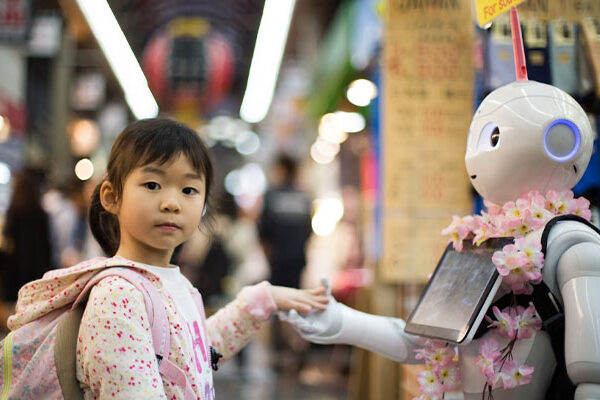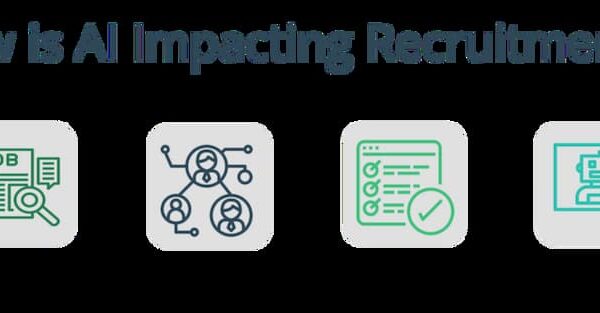Advances in science and technology have had a major impact on the medical industry. Healthcare teams will be significantly impacted as innovations such as intelligent robotics are introduced into healthcare and patient home settings, with massive technology investments and broad government initiatives to advance AI. Robots can help doctors perform surgeries, epidemiologists can use advanced tools and systems to help them better understand diseases, and even simple things like online patient portals and telehealth services can help practitioners better track patients’ care, making it easier for patients to get the information and support they need. This article provides an overview of artificial intelligence, including how AI algorithms and robots are changing the role of nurses, and the challenges facing the nursing profession as AI is integrated into health care delivery.
Table of Contents
What is AI?
Artificial intelligence is a broad class of emerging technologies designed to investigate, synthesize, learn, act on, and infer intelligence from a variety of clinical systems and information sources. The technology helps support and even supplement human tasks in some cases.
The goal of AI is to learn and adapt by providing faster and more relevant (or more relevant) responses and predictions than human computing power.
A few examples of technologies developed to take advantage of artificial intelligence include:
- Virtual Reality
- Voice Assistive Technology
- natural language processing
- Image Identification
- robot technology
- machine learning
- rule-based expert system
AI uses complex logic and programming to quickly understand topics and provide support, answers, and actions. The result is timely information synthesis, suggested actions, and even task completion. Artificial intelligence is a broad class of emerging technologies designed to investigate, synthesize, learn, act on, and infer intelligence from a variety of clinical systems and information sources. The technology helps support and even supplement human tasks in some cases.
How AI is Changing Nursing

AI is a technology that can learn and adapt to support and complement human tasks, helping nurses work more efficiently and improve their abilities. Furthermore, with the help of AI-driven systems and devices such as IoT wearables, nurses can also significantly improve patient care and future health policies.
Let’s take a look at the many ways nurses can work with AI to ease the workload and provide better care:
Improved Data
For some time, nurses have used clinical information and other digital support systems to enter clinical data and gather useful information. However, with the implementation of artificial intelligence in these systems, nurses can now collect data on a whole new level. AI computer processes can now evaluate data to provide more accurate answers to questions and make predictions about patient outcomes by identifying trends or patterns in data that are often overlooked by normal humans.
Optimized Workload
AI technology can be implemented in a healthcare setting in a number of ways. For example, AI-powered voice-assist systems can help nurses perform tasks faster and keep them on time and with better information. They can use voice commands to ask the system for information, such as retrieving information about a patient or policy and have the system verbally remind them of their schedule and tasks they need to perform.
Machine learning processes and systems can also make decisions and handle tasks for you, which can ease nurses’ workload. For example, an AI system can use patient information fed into the system to identify when they need to come to their next appointment or schedule treatment or testing, and it can continue to prepare those things for them. It can also automatically send results and notifications about tests, appointments, and treatment plans to patients and their care teams.
Better Patient Care And Treatment
Expert AI systems for finding anomalies and solving problems can better identify and diagnose diseases and conditions in patients. For example, visual recognition software can help nurses identify and catch problems they may not have noticed themselves. This can include assessing and diagnosing wound integrity, monitoring breathing patterns, and even identifying non-verbal cues of pain.
Nurses typically have to check patients back and forth throughout the day, but with AI systems that can monitor and alert them if something goes wrong, they can reduce stress and provide better-focused care. For example, AI systems can monitor patients’ hormone levels and notify nurses when their testosterone levels drop too low or too high. It’s a simple thing that overworked nurses might miss, but can now be better tracked with the help of AI-powered monitoring devices.
The machine-learning system can also identify patterns and trends, alerting nurses to patients who are at increased risk of infection, falls out of bed, sepsis, and relapses. On the administrative side, AI can help nurses identify patients who are experiencing hardship and may need financial assistance to pay for care. It can predict the cost of care a patient may need based on the condition the patient is receiving.
LoT Medical Devices
LoT, such as IoT medical devices and wearables, are essentially smart devices that can connect to the internet to collect, share, and process data. These devices enable nurses to collect real-time patient data, receive alert notifications, and aid in patient monitoring. Instead of checking patients one by one in a hospital, they can send the required information directly to a mobile phone, computer, or wearable devices such as a smart wristband or smartwatch.
Challenges Of Artificial Intelligence In Nursing

While AI offers promising solutions for nursing, it is not without its drawbacks. For example, just because you can use an AI tool, doesn’t mean you should. Depending on the application, many traditional tools actually perform similarly (or better) than their AI counterparts, such as in predicting mortality in elderly patients treated for hip fractures. Data quality and provenance, as well as modeling validation, have shown mixed results. New robots may encounter resistance. Cultural change is always a factor when introducing new things, but robotics can be misunderstood or seen as aggressive if not implemented carefully. Medical professionals may also worry that AI will lead to job losses. This may be true in the future, but current tools and those under development are not meant to replace human work; they are intended as enhancements. Additionally, many are concerned about confidentiality and privacy associated with the use of AI. As with technology that handles sensitive information, there are risks. However, with careful planning and implementation, these risks can be mitigated.
The Future of Health Policy
Nurses are critical in implementing and maintaining health policy. The majority of their time is spent interacting with patients and caring for patient needs, which means they are able to recognize what went wrong and how to improve policies and procedures. With AI systems, nurses can more easily identify deficiencies and communicate with other team members and their superiors about what changes are needed to improve policies and provide better patient care. They can also use artificial intelligence to address and correct these inefficiencies.
Conclusion
Nurses have been in a unique position to influence the integration of technology at the point of care. As an additional contributor to the care team, a new set of skills and practical knowledge is required to interact with machines.
AI technologies are becoming a partner in the nursing sector to rapidly synthesize information, get work done, assist clinical decision-making, and improve patient outcomes. Individually, each emerging technology presents a huge opportunity to improve care. Combining these solutions and educating nurses on how to best interact with machines will open up limitless solutions for future efficiency, capacity, quality, and healthcare reform.




